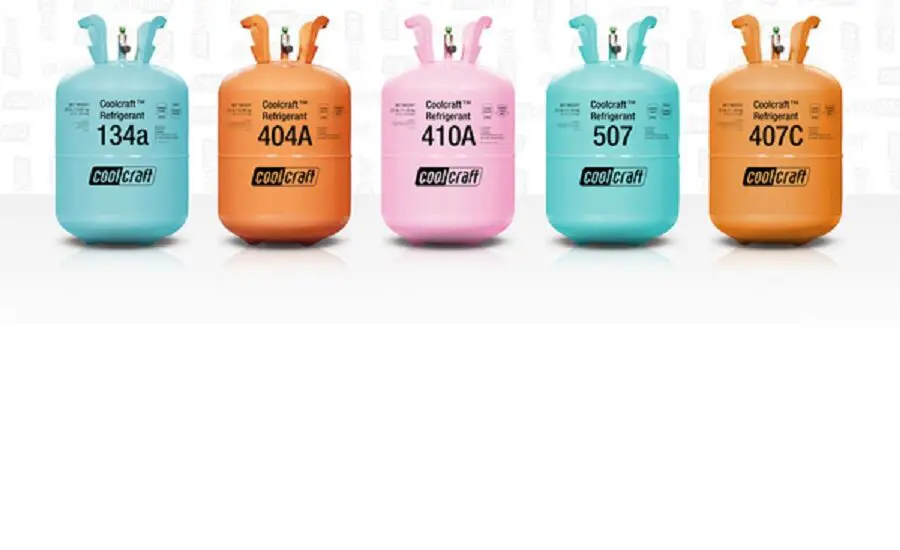Refrigerant tank colors are more than just a pretty sight. They’re a code, a language in their own right, guiding us through the maze of refrigerants. So, what’s the story behind these colors, and why should you care?

Table of Contents
Understanding Refrigerant Tank Colors
You see, each color on a refrigerant tank speaks volumes, if you know how to listen. It’s like a secret handshake among HVAC pros!
The Importance of Color Coding
Safety Implications
Imagine you’re working on an AC system, and you accidentally mix up the refrigerants. Sounds like a recipe for disaster, right? That’s where these refrigerant tank colors come in handy. They’re like traffic lights, guiding us on the right path and preventing accidents.
Practical Usage
And it’s not just about safety. Proper color coding also ensures the efficient running of your HVAC systems. Think of it as tuning an instrument. You wouldn’t want to play a beautiful symphony on an out-of-tune piano, would you?
The Refrigerant Color Coding System
The Role of AHRI Standard 700-2020
Ever heard of the AHRI Standard 700-2020? It’s like the Rosetta Stone of refrigerant colors, decoding the meaning behind each hue. Following this standard helps ensure your refrigerant sings the right tune in your HVAC system.
Global Standards and Variations
But hey, it’s not a one-size-fits-all scenario. There are different strokes for different folks. Some countries march to the beat of their own drum when it comes to refrigerant color coding. So, always double-check the standards in your area, okay?
Refrigerant Tank Colors for Commonly Used Refrigerants
The Color for R134a Refrigerant
Description of Color
When it comes to R134a, we’re talking light blue. It’s like a clear sky on a perfect summer day – a sight for sore eyes, especially for your car’s AC system.
Applications and Uses
R134a is the go-to guy for automotive AC systems. So, next time you’re enjoying a cool breeze in your car, remember to thank the light blue can!
Read our other articles on refrigerants – Articles on Refrigerants: The Ultimate Guide to Understanding Them
The Color for R22 Refrigerant
Description of Color
On the other hand, R22 is all about that green. It’s like the color of a fresh spring leaf – pretty cool, right?
Applications and Uses
Green means go for older AC systems. They’re big fans of R22. But remember, R22 is being phased out due to environmental concerns, so it’s worth considering alternatives.
Misconceptions and Common Mistakes Regarding Refrigerant Colors
Misinterpretations of Colors
Case Examples of Misconceptions
Some folks think color-coding is like a mood ring, changing based on the refrigerant’s “mood.” But that’s a myth. Each color is set in stone, like a birthstone, representing a specific type of refrigerant. No mood swings here!
Impact on Safety and Efficiency
Misinterpreting the colors can lead to a whole host of problems. It’s like using salt instead of sugar in your coffee because both are white. The result? Well, you’re not going to enjoy that coffee, and your HVAC system won’t enjoy the wrong refrigerant either!
Steps to Avoid Confusion
Verifying the Refrigerant Type
So, how can you avoid this mix-up? Double-checking is the name of the game. It’s like checking your shopping list before heading to the supermarket. You wouldn’t want to come home with the wrong groceries, would you?
Following Manufacturers’ Guidelines
And of course, always follow the manufacturer’s guidelines. They’re your compass, guiding you through the refrigerant jungle. Ignoring them is like refusing to ask for directions when you’re lost. Not a good idea, right?
The Future of Refrigerant Color Coding
Potential Changes in Standards
Evolving Safety Regulations
As we move forward, safety regulations are bound to evolve, just like fashion trends. But unlike the questionable bell-bottoms trend, these changes are all about keeping you safe and sound. So, keep your eyes peeled for updates, will you?
Impact of New Refrigerant Types
And let’s not forget about the new kids on the block – the emerging refrigerants. They’re like the new students in school, bringing in fresh colors and codes. Exciting times ahead, don’t you think?
Adapting to Changes in Refrigerant Color Coding
Preparation and Training
So, how do you stay ahead of the game? Preparation and training are key. It’s like studying for an exam. You wouldn’t walk in without any preparation, would you? The same applies to refrigerant color coding.
Role of Manufacturers and Industry Bodies
And remember, manufacturers and industry bodies are your allies in this journey. They’re like your trusty tour guides, helping you navigate the evolving landscape of refrigerant colors. So, don’t hesitate to reach out to them for support, okay?
Conclusion
Recap of Key Points
So, to sum it all up, refrigerant tank colors are like a language. Once you understand them, they open up a world of safety and efficiency. Cool, isn’t it?
Importance of Continued Education about Refrigerant Colors
And remember, learning is a journey, not a destination. So, keep exploring, keep learning, and you’ll be a refrigerant color pro in no time. Ready to paint the town red… or should I say, light blue or green?
